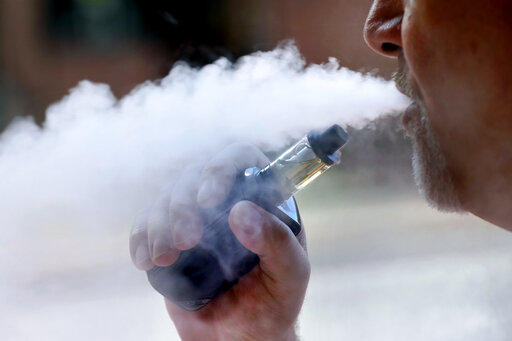The number of people killed or sickened by lung injuries linked to vaping increased again in the past week, with public-health officials still unable to clearly identify the root cause of a nationwide outbreak.
The U.S. Centers for Disease Control and Prevention said they had identified 1,479 cases of the vaping-related ailment as of Oct. 15, up from 1,299 a week earlier, and that 33 people had died, an increase from 26 in the previous report. The ages of the deceased range from 17 to 75 years old.
The scale of epidemic — it has appeared in every U.S. state but Alaska — and the speed with which it has spread has shocked regulators and doctors and ignited a national debate about the safety of electronic cigarettes.
Regulators have signaled in recent weeks that the outbreak is rooted in use of black-market vaping products containing THC, the psychoactive ingredient in marijuana. But they haven’t definitively connected the sickness to any one product or behavior. A small percentage of cases have been linked to nicotine-only products.
The uncertainty makes it difficult for federal regulators to swiftly remove a product from the market, as they frequently do when food or medicine makes Americans sick. For example, when salad greens are contaminated with bacteria, or a drug is tampered with, investigators can often determine the source of the problem and get tainted products out of stores.
There are hundreds of devices and ingredients at play in the vaping market and not all are legal, making identifying the source of the outbreak much more difficult. And the disease itself — a diagnosis of exclusion — is harder to trace, as it can’t be precisely mapped with DNA sequencing tests like bacterial outbreaks can.
“The more a product has multiple ingredients, the more a product is altered, that makes it very hard to pull the pieces together and link it to particular thing,” said William Marler, a plaintiffs’ lawyer who specializes in food-borne outbreaks. “Short of saying you are going to ban vaping, you don’t really know what ingredient to go after.”
Federal regulators are generally loathe to single out a product for triggering health problems until they are highly confident it is the right one, he said.
Compounding the uncertainty, it’s unclear how longstanding the lung disease is and whether it has been mistaken for other conditions in the past. At least 15 incidents of lung injuries linked to vaping occurred prior to this year’s epidemic, a review by Bloomberg News found.
On Thursday, Juul Labs Inc. said it would stop sales of most flavors in the U.S., with the exception of mint, menthol and tobacco flavors. The company’s Juul e-cigarette hasn’t been linked to the outbreak of injuries, but has been criticized for propelling an explosion of youth vaping.
If the lung cases follow the pattern of food-illness outbreaks, it’s likely there were other vaping-related injuries in the past year or two that went unidentified because they were isolated, Marler said.
The suspected widespread use of black-market liquids in vaping devices that are legal but lightly regulated has made the job of deciding what action to take harder. While law enforcement has broken up illegal vaping-liquid operations in recent months, an obscure and diffuse market for such products makes harmful ingredients harder to track.
Many states have proposed strict curbs on vaping, especially on the flavored e-liquids that have appealed to young users. Seventy-nine percent of those sickened in the current outbreak are under 35. However, many of the regulations have been held up by legal challenges.
Michael Bloomberg, the founder and majority owner of Bloomberg LP, funds anti-vaping advocacy initiatives.
Was this article valuable?
Here are more articles you may enjoy.


 ‘Dream Is in Sight:’ Chamber, Reinsurers, Insurers Urge Florida to Stay the Course
‘Dream Is in Sight:’ Chamber, Reinsurers, Insurers Urge Florida to Stay the Course  Verlan Files Subro Suit Against Georgia Chemical Plant After $20M Payout on Fire
Verlan Files Subro Suit Against Georgia Chemical Plant After $20M Payout on Fire  Thailand’s Record Floods Paralyze Key Hubs for Tech and Car Parts
Thailand’s Record Floods Paralyze Key Hubs for Tech and Car Parts  Zillow Deleting Climate Risk Scores Reveals Limits of Flood, Fire Data
Zillow Deleting Climate Risk Scores Reveals Limits of Flood, Fire Data 